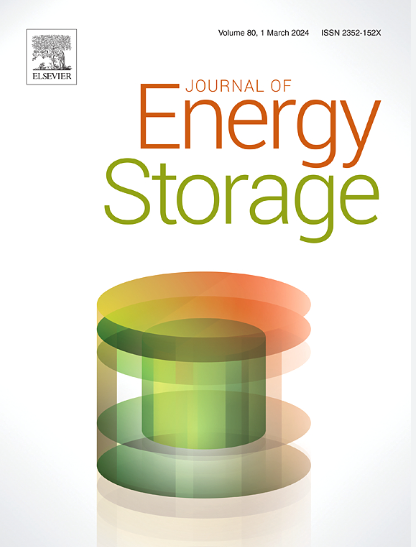Study on heat transfer characteristics of directly buried casing energy storage body backfilled with phase change material
IF 8.9
2区 工程技术
Q1 ENERGY & FUELS
引用次数: 0
Abstract
Seasonal Thermal Energy Storage (STES) effectively utilizes solar energy to perform “peak shaving and valley filling” in the energy supply. Borehole thermal energy storage (BTES) is one of the most important solutions for STES due to its low initial cost, adaptability, and eco-friendliness. This study analyzes the effects of borehole spacing, depth, number of boreholes, and energy storage body type on the performance of BTES when backfilled with different volume fractions of PCM. The results show that an optimal borehole spacing exists for the BTES to reach the highest energy storage efficiency, which reaches 77.17 % at a spacing of 4 m. Increasing the depth and number of boreholes can significantly improve the heat storage capacity and heat extraction capacity of BTES. Increasing the depth of boreholes from 200 m to 400 m increases the heat storage capacity by 80.88 % and the heat extraction capacity by 81.47 %; increasing the number of boreholes from 9 to 25 increases the heat storage capacity by 167.75 % and the heat extraction capacity by 167.98 %. For the sphere, hexagonal prism, and cuboid as energy storage bodies, their energy storage efficiencies are 59.97 %, 63.97 %, and 59.3 % respectively. Meanwhile, the corresponding exergy efficiencies are 48.74 %, 46.7 %, and 47.43 % respectively. This indicates that the sphere has the largest exergy efficiency, whereas the hexagonal prism, among these three, has the largest energy storage efficiency but the smallest exergy efficiency.
相变材料回填直埋套管储能体换热特性研究
季节性热能储存(STES)有效地利用太阳能在能源供应中进行“调峰填谷”。由于初始成本低、适应性强、生态友好,井内储热(BTES)是STES最重要的解决方案之一。分析了不同体积分数PCM回填时,井距、井深、井数和储能体类型对BTES性能的影响。结果表明,BTES存在最佳井距,当井距为4 m时,储能效率达到77.17%;增加钻孔深度和钻孔数量可以显著提高BTES的蓄热能力和抽热能力。将钻孔深度由200 m增加到400 m,储热能力和抽热能力分别提高80.88%和81.47%;井眼数量由9个增加到25个,储热能力和抽热能力分别提高了167.75%和167.98%。对于球体、六棱柱和长方体作为储能体,其储能效率分别为59.97%、63.97%和59.3%。相应的火用效率分别为48.74%、46.7%和47.43%。这说明球体的能量储存效率最大,而六角形棱镜的能量储存效率最大,但能量储存效率最小。
本文章由计算机程序翻译,如有差异,请以英文原文为准。
求助全文
约1分钟内获得全文
求助全文
来源期刊

Journal of energy storage
Energy-Renewable Energy, Sustainability and the Environment
CiteScore
11.80
自引率
24.50%
发文量
2262
审稿时长
69 days
期刊介绍:
Journal of energy storage focusses on all aspects of energy storage, in particular systems integration, electric grid integration, modelling and analysis, novel energy storage technologies, sizing and management strategies, business models for operation of storage systems and energy storage developments worldwide.
 求助内容:
求助内容: 应助结果提醒方式:
应助结果提醒方式:


